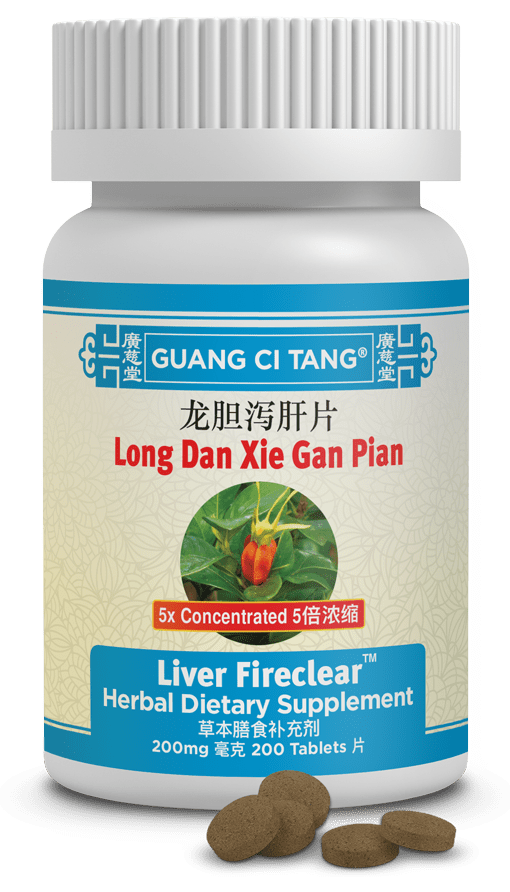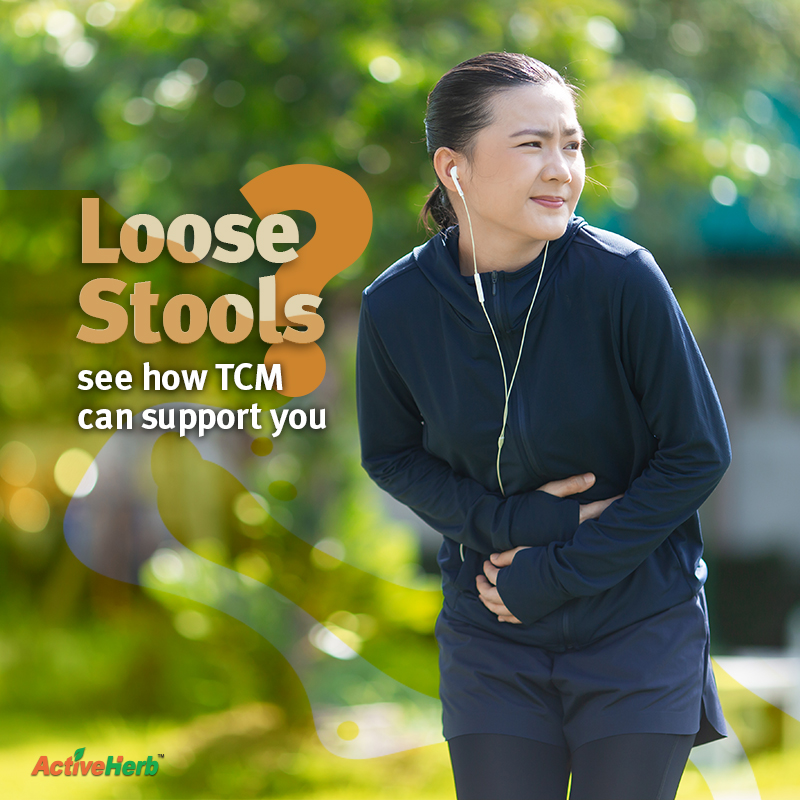A Scorching Heat Wave: Damp Heat, Phlegm & Fire In TCM

Imagine Jim, a 52-year-old executive in a high-stress sales job. After a long day at work, Jim often unwinds with a couple of scotches, followed by a dinner like frozen pizza or microwave burritos. His evening routine includes lounging on the couch for a few hours, indulging in ice cream, chips or cheese and crackers while watching TV. The combination of workday stress and a non-nutritious diet leads to the buildup in his body of 3 Traditional Chinese Medicine (TCM) influences: Damp Heat, Phlegm, and Fire. Over time, Jim begins to feel heavy, stiff, and achy in his joints. He also experiences fatigue, digestive issues, and irritability.
If you want to improve your health, don’t eat like Jim. (Obviously.) It also helps to understand how these 3 TCM influences affect your body’s internal balance.
What Are Damp Heat, Phlegm & Fire In TCM?
Let’s first summarize what the 3 TCM influences are before going in more depth individually.
In TCM, Damp Heat, Phlegm, and Fire represent different pathological conditions but share the theme of internal imbalance.
Damp Heat combines the heavy, turbid nature of dampness with the excessive warmth of heat, often resulting from poor diet and environmental factors. Damp Heat manifests as symptoms like lethargy, fever, and a greasy tongue coating.
When the body’s fluid metabolism becomes sluggish, the Damp Heat leads to Phlegm, an accumulation of thick, turbid mucus that obstructs various bodily functions. This mucus is a pathological byproduct arising primarily due to Spleen Qi deficiency and can present as both visible mucus and invisible obstructions, causing dizziness, chest fullness, or mental disturbances. Damp Heat and Phlegm typically overlap each other.
Distinct from Damp Heat and phlegm, Fire represents an extreme form of Yang, marked by intense symptoms such as sensation of heat, red eyes, and irritability. Think of it as a wildfire in the body. Often due to emotional stress, an excess of spicy foods, or unresolved heat conditions, Fire is an acute and sometimes severe condition, as Jim will learn the hard way if he doesn’t change his lifestyle. Although Fire is a distinct pattern in TCM, it can be caused by Damp Heat. (There are five different kinds of Fire in TCM, each relating to a specific organ system, but that’s the subject of another ActiveHerb blog.)
Your Body Is A City: Keep It Running Smoothly!
To the TCM neophyte, the differences between Damp Heat, Phlegm and Fire may seem esoteric and beyond comprehension. Thus, let’s use an analogy…
Imagine your body as a bustling city. Damp Heat is like an unbearably hot and humid summer heat wave. Everything moves slowly. Leaking water creates an environment ripe for problems like mold and mildew. Phlegm is like the city’s drainage system being clogged with debris, preventing proper flow and leading to blockages that cause sewer backups. Meanwhile, a late-afternoon severe thunderstorm unleashes a bolt of lightning that strikes an aging electrical line, sparking a fire. The fire requires urgent intervention to prevent widespread damage.
Just as each scenario impacts the city differently, Damp Heat, Phlegm, and Fire each affect the body uniquely. Yet, they all represent imbalances that disrupt harmony and health. Adopting lifestyle changes and using TCM (herbs and acupuncture) to address internal imbalances may help contribute to a healthier lifespan.
What Is Damp Heat?
Damp Heat is a pattern characterized by the simultaneous presence of both dampness and heat within the body. Dampness in TCM refers to a heavy, turbid condition, while heat denotes excessive warmth. This combination can arise from a variety of factors, including diet (consumption of greasy, spicy foods), lifestyle (exposure to hot and humid environments), and internal imbalances (weakened Spleen function leading to fluid retention).
Understanding Damp Heat is crucial because it is a common underlying factor in many chronic conditions. Recognizing and addressing it early can prevent more severe health issues.
Common symptoms of Damp Heat include a feeling of heaviness, lethargy, fever, a bitter taste in the mouth, and a sticky or greasy coating on the tongue. It can lead to jaundice, urinary tract infections, and eczema, to name a few.
—-> Related: What is Damp Heat & How Do You Know If You Have It?
TCM Formulas For Damp Heat
Long Dan Xie Gan Tang (Gentiana Longdancao Decoction to Drain the Liver): This formula, available through ActiveHerb as Liver FireClear is effective in clearing Damp Heat from the Liver and Gallbladder. TCM commonly uses it to balance emotions and other signs of liver disharmony.
Ba Zheng San (Eight-Herb Powder for Rectification): Utilized for Damp Heat in the Lower Jiao, it is particularly effective for imbalances in the urinary tract. Available as UTflow.
What is Phlegm?
Phlegm in TCM is not just the mucus we think of in Western medicine. It can be. But TCM phlegm is more complex. It’s a pathological substance that can arise from various sources. As discussed, it’s a byproduct of dysfunctional fluid metabolism caused by a deficiency of energy in the main organ system responsible for transforming nutrients from food into Qi and Blood (the Spleen). This condition is Spleen Qi deficiency. Phlegm can manifest in two forms: substantial (visible mucus) and insubstantial (invisible, such as in mental disturbances).
Phlegm is a critical concept in TCM because it can obstruct the flow of Qi and Blood, leading to many health problems. Recognizing and treating Phlegm can significantly improve health outcomes. So how do you know if you have it? Symptoms include dizziness, a sensation of fullness in the chest, cough with copious sputum, and lumps or nodules under the skin. Insubstantial Phlegm can lead to mental issues like depression or anxiety.
TCM Formulas That Resolve Phlegm
Er Chen Tang (Two-Cured Decoction): A fundamental formula for resolving Damp and transforming Phlegm, often used for digestive and respiratory issues. It contains Chen Pi (Tangerine peel) and Ban Xia (Pinellia tuber), which are included in the ActiveHerb.com formula, Stomakinder.
Wen Dan Tang (Warm the Gallbladder Decoction): Disharmony between the Gallbladder and Stomach channels produces phlegm. In TCM, the Gallbladder is the source of courage. Thus, phlegm may cause fright and fear, restlessness, dreaminess and uneasiness. Available through ActiveHerb.com as SpiritSoothe.
Ban Xia Hou Po Tang (Pinellia and Magnolia Bark Decoction): Effective for Phlegm obstructing the throat, “PharynJoy” by ActiveHerb.com may help resolve “Plum-Pit Qi syndrome,” a sensation of a lump in the throat that cannot be relieved by expectorating or swallowing. The syndrome may also include fullness in the chest and diaphragm, while the tongue is white and moist and the pulse is wiry and moderate or wiry and slippery.
Put Out The Fire: An Excessive Yang Pattern
Fire or Heat in TCM represents an extreme form of Yang. It can arise from various sources, including emotional stress, excessive consumption of hot and spicy foods, and chronic illnesses. Fire can also develop from unresolved Heat conditions, exacerbating symptoms and leading to more serious conditions.
If not appropriately managed, fire can lead to rapid deterioration in health, with symptoms ranging from high fever, red eyes, irritability, a red tongue with a yellow coating, and rapid pulse. More seriously, it can lead to conditions such as feverish diseases, inflammation, and even bleeding disorders.
TCM Formulas For Extinguishing Fire
Huang Lian Jie Du Tang (Coptis Decoction to Relieve Toxicity): A potent formula for clearing severe Heat and Fire toxicity, ActiveHerb.com’s CoptisClear may help support inflammatory responses.
Other Heat-Related Patterns in TCM
Not to confuse you even more if you’re just learning the basics of TCM, but there are other heat patterns to learn about.
Summer Heat
Summer Heat is a seasonal pathogenic factor that typically arises during the hot and humid summer months. It can invade the body directly from external heat and dampness or be exacerbated by overexposure to high temperatures. It can cause high fever, excessive sweating, irritability, thirst, fatigue, heatstroke, dehydration, and summer flu.
(If you have a Late Summer Damp Heat invasion, this may help.)
Toxic Heat
Also known as Fire Toxin, toxic heat refers to an extreme accumulation of heat and toxins in the body. Severe infections, inflammatory conditions, or the ingestion of toxic substances can cause this. Toxic Heat symptoms include high fever, swollen and painful throat, red skin eruptions, and abscesses. It can lead to serious conditions such as sepsis, severe skin infections, and inflammatory diseases. The aforementioned CoptisClear may help clear toxic heat.
Yin Deficiency Heat
A.K.A. Empty Heat, this pattern results from an insufficiency of Yin fluids in the body, leading to a relative excess of Yang. This internal imbalance can occur due to chronic illness, aging, overwork, or long-term emotional stress. In addition, heat caused by Yin Deficiency can manifest as night sweats, five-palm heat (heat in the palms, soles, and chest), insomnia, dry mouth, and a red, cracked tongue, sluggish thyroid, menopausal symptoms, and chronic fatigue.
Liu Wei Di Huang Wan (Six-Ingredient Pill with Rehmannia) is a classic formula for nourishing Yin and addressing Yin Deficiency Heat. Commonly for menopausal symptoms and kidney channel health, the action of this formula sold by ActiveHerb.com says it all: YivVive.
Which TCM formula best addresses your unique symptoms and patterns? pattern? Visit your local acupuncturist for the best results.
Got any questions? Post it below…








